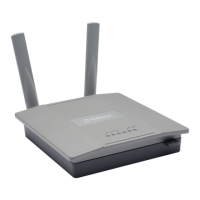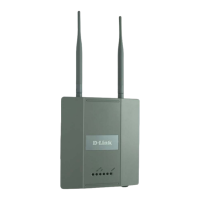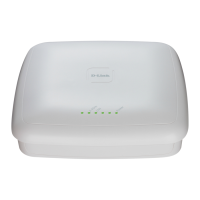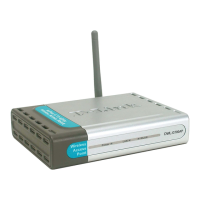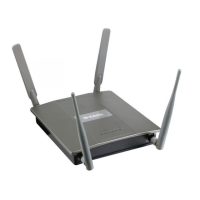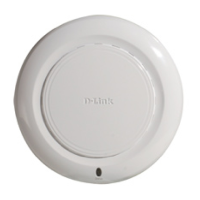Unied Access Point Administrator’s Guide
Page 24
January 2015
Section 3 - Viewing Access Point Status
Field Description
Persistence Choose Enabled to save system logs to non-volatile memory so that the logs are not erased
when the AP reboots. Choose Disabled to save system logs to volatile memory. Logs in
volatile memory are deleted when the system reboots.
Severity Specify the severity level of the log messages to write to non-volatile memory. For example,
if you specify 2, critical, alert, and emergency logs are written to non-volatile memory. Error
messages with a severity level of 3 – 7 are written to volatile memory.
•) 0 — emergency
•) 1 — alert
•) 2 — critical
•) 3 — error
•) 4 — warning
•) 5 — notice
•) 6 — info
•) 7 — debug
Depth You can store up to 128 messages in non-volatile memory. Once the number you congure
in this eld is reached, the oldest log event is overwritten by the new log event.
Table 7 - Logging Options
Note: To apply your changes, click Apply. Changing some settings might cause the AP to stop
and restart system processes. If this happens, wireless clients will temporarily lose connectivity.
We recommend that you change AP settings when WLAN trafc is low.
Conguring the Log Relay Host for Kernel Messages
The Kernel Log is a comprehensive list of system events (shown in the System Log) and kernel messages such as
error conditions, like dropping frames.
You cannot view kernel log messages directly from the Administration Web UI for an AP. You must rst set up a remote
server running a syslog process and acting as a syslog log relay host on your network. Then, you can congure the
UAP to send syslog messages to the remote server.
Remote log server collection for AP syslog messages provides the following features:
•) Allows aggregation of syslog messages from multiple APs
•) Stores a longer history of messages than kept on a single AP
•) Triggers scripted management operations and alerts
To use Kernel Log relaying, you must congure a remote server to receive the syslog messages. The procedure to
congure a remote log host depends on the type of system you use as the remote host.
Note: The syslog process will default to use port 514. We recommend keeping this default port.
However; If you choose to recongure the log port, make sure that the port number you assign to
syslog is not being used by another process.
Enabling or Disabling the Log Relay Host on the Events Page
To enable and congure Log Relaying on the Events page, set the Log Relay options as described in the following
table, and then click Apply.
Field Description
Relay Log Select Enabled to allow the UAP to send log messages to a remote host. Select Disabled
to keep all log messages on the local system.
Relay Host Specify the IP Address or DNS name of the remote log server.
Relay Port Specify the Port number for the syslog process on the Relay Host.
The default port is 514.
Table 8 - Log Relay Host
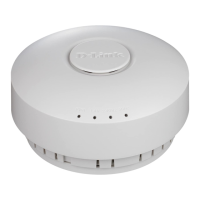
